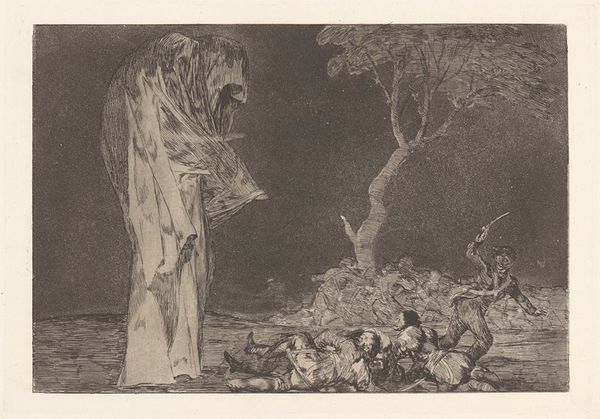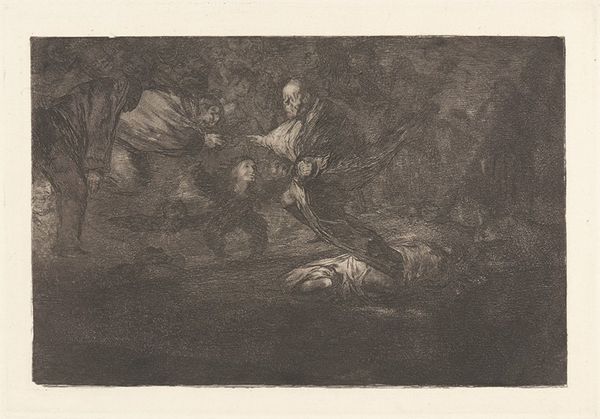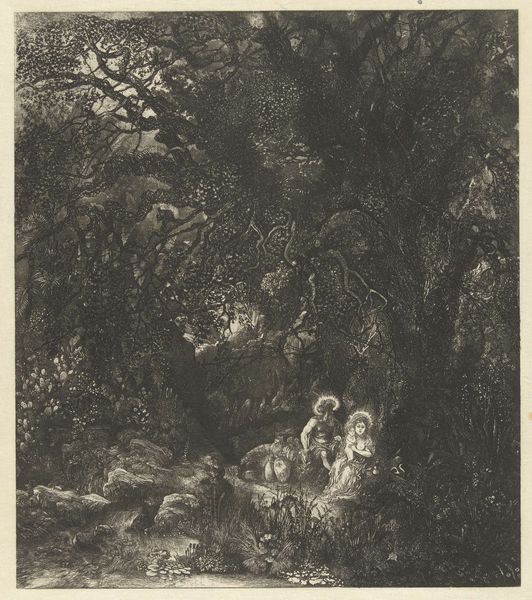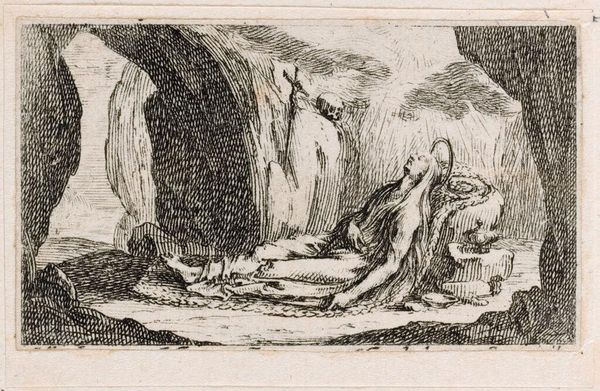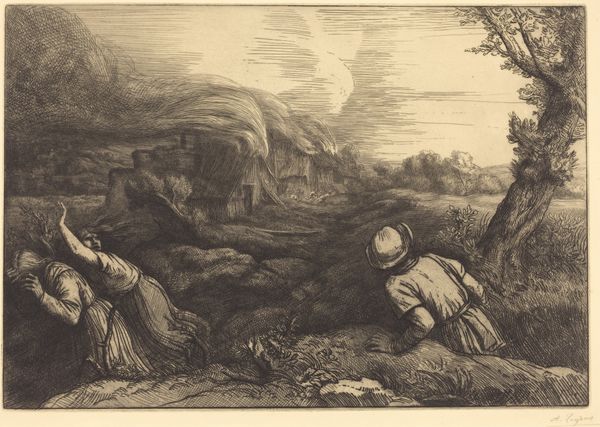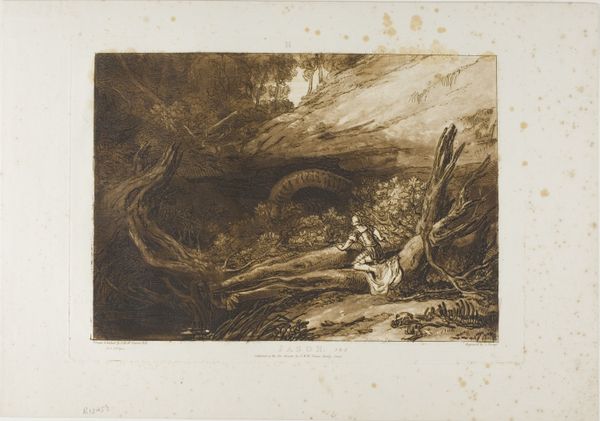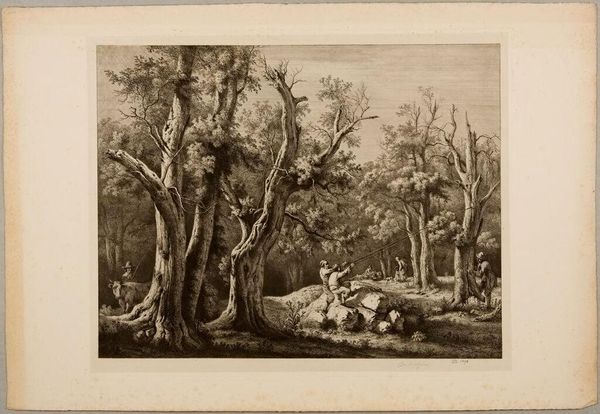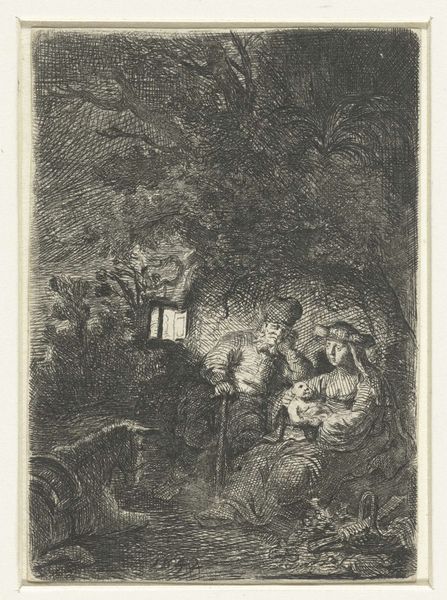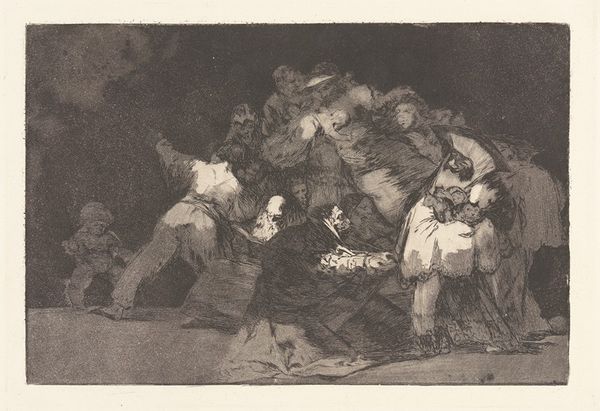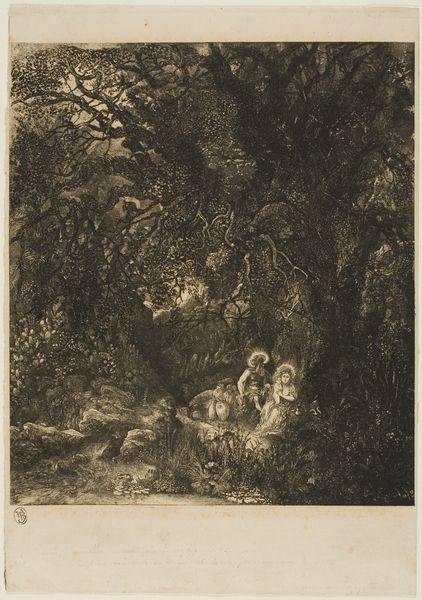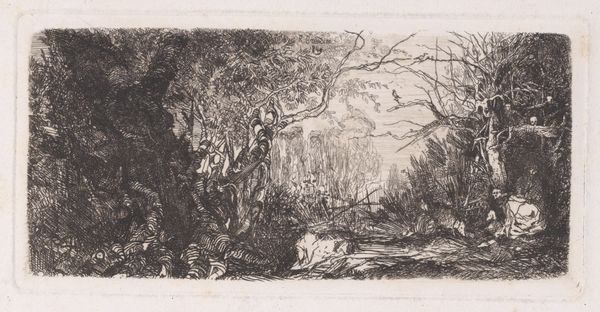
drawing, print, etching
#
drawing
#
ink drawing
# print
#
pen sketch
#
etching
#
landscape
#
figuration
#
realism
Dimensions: plate: 27.94 × 37.94 cm (11 × 14 15/16 in.) sheet: 39.21 × 50.17 cm (15 7/16 × 19 3/4 in.)
Copyright: National Gallery of Art: CC0 1.0
Curator: This is "The Woodsman," an etching by John E. Costigan, dating from around 1953. Editor: It's bleak, isn't it? Those towering, almost skeletal trees dominating the composition. And the limited tonal range emphasizes that sense of starkness. Curator: Costigan, often associated with the American Scene movement, presented rural life as an idealized form of working class stability during a time of considerable social change. This work presents that familiar, timeless depiction of agrarian existence. Editor: Idealized? I see toil etched into the landscape, even if it’s visually harmonious. Notice how the figures are enveloped, dwarfed, almost swallowed, by the overbearing woods. Their stoicism feels… enforced. Curator: Perhaps, but that also speaks to humanity’s intrinsic connection with the land. The family group—a common motif for Costigan—signifies enduring familial and community values rooted in agricultural labor. He's reminding us of something perhaps, lost, or under threat. Editor: True, the grouping gives a strong sense of family. Semiotically, the recurring group acts almost as a brand. But even within that, look at the mark-making, particularly the use of hatching to define the forms, how that emphasizes volume but also textures them, bringing a tactile sense of… roughness. Even the sky seems to press down with all those little strikes and flecks. Curator: These prints gained traction amongst socialist movements that were promoting the ‘worker’ ideal, you can certainly interpret this etching as a celebration of the dignity of labor amidst a burgeoning consumer culture. Editor: Or as a caution about the weight of tradition. The linear intensity pulls my focus repeatedly from the humans to the natural elements around them, hinting that one is subjected to the other. What could also be read as a portrait of human virtue is equally a case of man being inconsequential to mother nature. Curator: I find it’s such a striking statement regarding the enduring legacy of the American rural ideal, and how its influence trickled down into working class iconography. Editor: I agree. Ultimately, “The Woodsman” reveals that beneath simplicity there can be something both visually haunting and psychologically evocative.
Comments
No comments
Be the first to comment and join the conversation on the ultimate creative platform.
